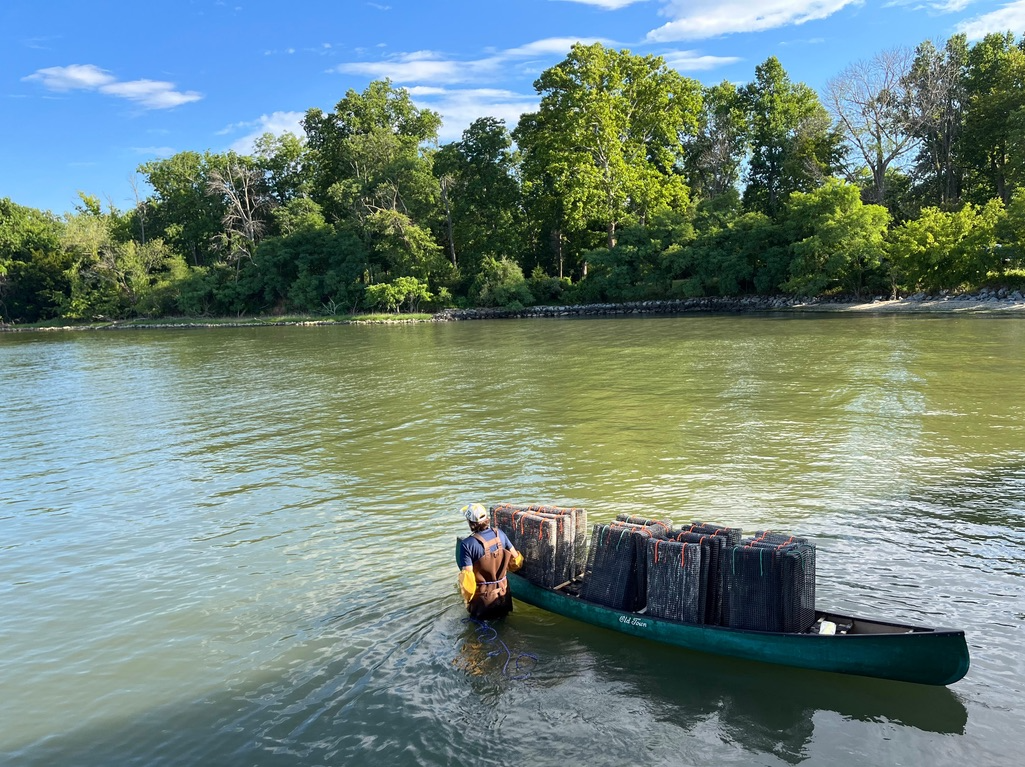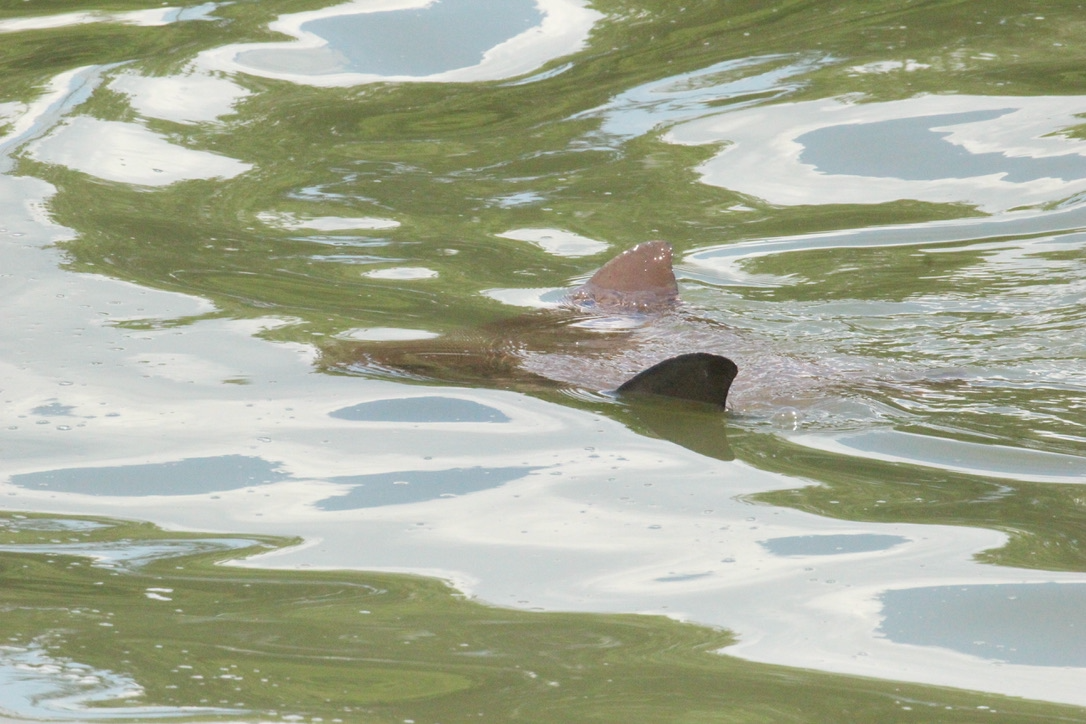Knauss legislative fellowships in Congress help build careers — and they're fun and educational. See our video and fact sheet for details.
Stories Around an Oyster Farm
At the University of Maryland Center for Environmental Science’s Horn Point Laboratory in Cambridge, Maryland, there is an oyster demonstration farm. Graduate students and scientists use this small-scale oyster farm to aid their experiments. For example, one student used the farm to determine if exposing oysters to air could effectively reduce biofouling on oyster cages. Another student uses the farm to estimate oyster populations with an underwater drone. This summer, I had the privilege to maintain a portion of the oyster farm.
In Maryland, oysters are commonly grown in sturdy wire cages that rest on the bottom of the Bay or are suspended in the water column with pontoons. For my experiment, I used bottom cages that sat on the Bay floor. My work at the oyster farm aimed to understand sediment, or sand, below oyster cages.
Oysters filter feed on algae in water. They expel their feces into the water and sediment. If that feces heavily accumulates in the sediment below oyster cages, it can create a toxic buildup of sulfide and harm the localized environment. My research hopes to find ways to remove this toxin to maintain a healthier ecosystem.

One way I examined the health beneath oyster cages was by collecting sediment samples. I had to lift heavy oyster cages to access the sediment. Then, to extract samples, I drove a tube into the sediment and capped it on either end with rubber stoppers. One day collecting sediment at the oyster farm last summer was especially memorable.
I waded into the water under a cloudy, light gray sky. I was used to shallower waters during low tide, but after heavy rainfall the previous day, the water was deep and murky. Still, I proceeded on. My oyster farm contained two rows of oyster cages situated 10 yards apart. As I approached, I saw two or three fins pop out of the water in the gap between the oyster cage rows. Of course, I went through the quick panic of ‘Is it a shark or dolphin?’ I waited a few seconds for the fins to reappear, and relieved, recognized them as cownose rays!

It was odd to see multiple cownose rays surface suddenly in the small area, as these rays are mostly bottom feeders. I continued to extract sediment around my oyster cages, trying my best to avoid the rays roaming in the cloudy water.
A year later, I was working at the oyster farm and walked to the pier to change out of my wetsuit. As I rinsed my wetsuit down with fresh water, I saw a familiar sight—an osprey that nests in some trees across from the pier. The osprey was flapping its wings and holding its position about 40 yards above me. In a matter of seconds, it dove down like a fighter jet into the water. The osprey surfaced and remained there for a few moments before flying away with a freshly caught fish to feed its younglings.
I never expected to experience memorable wildlife encounters at an oyster farm. They reaffirmed my appreciation for the outdoors and brought back memories of canoeing and fishing in Michigan rivers. It was a great reminder to pause and be thankful for my surroundings in my daily, busy life.
See all posts to the Fellowship Experiences blog



